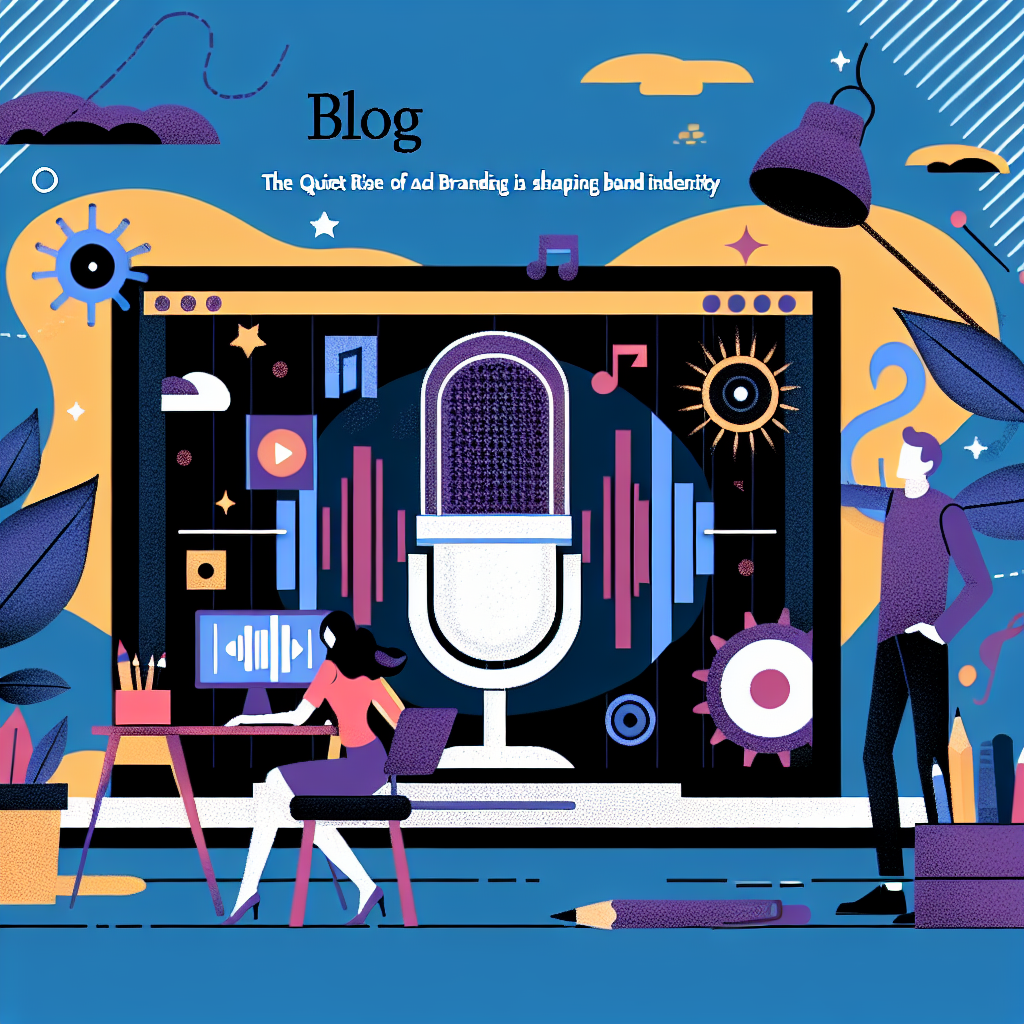
The Quiet Rise of Audio Branding: How Sound Is Shaping Brand Identity
Spybroski Team
The Quiet Rise of Audio Branding: How Sound Is Shaping Brand Identity
You hear it. that "ta-dum" sound. You probably already know what I’m talking about, right? Your TV screen lights up, and before any show starts, that simple sound tells you you’re on Netflix. It's instant. It's emotional. and it's a perfect example of the quiet power of audio branding.
For years, we’ve focused on logos, color palettes, and fonts. but what a brand sounds like is becoming just as important as what it looks like. This isn't just about catchy jingles anymore. We’re talking about a complete strategy for shaping brand identity through sound.
So, What Is Audio Branding Anyway?
Let's get straight to it. What is audio branding? Simply put, it’s the strategic use of sound to build a brand’s personality. Think of it as your brand's official soundtrack. It’s sometimes called sonic branding, and it covers everything from a short sound logo to the hold music on a customer service line.
The whole point is consistency. when you hear a specific sound or piece of music, your brain should immediately connect it to a brand. This is how sound influences branding on a fundamental level, creating a shortcut to recognition and feeling. It’s about building a connection that goes beyond just sight.
Why Your Ears Are a Direct Line to Your Wallet
Ever wonder why companies use audio branding? it’s not just a creative whim; there’s some real science behind it. Our brains are wired to react to sound incredibly fast, even faster than we process visual information. A sound can trigger a memory or an emotion almost instantly.
This is a huge deal for marketing. does sound affect brand recognition? Absolutely. a distinctive sound can make a brand more memorable than a visual logo alone. remember the old Nokia ringtone? It became so iconic that the sound itself was the brand for a generation. That’s the importance of sound in marketing; it bypasses the analytical part of our brain and goes straight for the emotional core.
The Building Blocks of a Sound Identity
So, you want to get started with branding with sound? It’s more than just picking a cool song. A solid audio brand is built from a few key elements.
Here’s a simple breakdown of how to develop a brand sound:
- The Sonic Logo: This is the star of the show. a sonic logo is a short, unique soundbite, like the three-tone chime for NBC or Intel's famous five-note "bong." The goal is to create a sonic logo that's instantly recognizable.
- Jingles: These are the longer, melodic tunes we all know. Mcdonald's "bada ba ba ba" is a masterclass in how a few simple notes can define a global brand. The impact of music on brand image here is undeniable.
- Brand Voice: This is about voice and tone branding. What does the person speaking for your brand sound like? Are they calm and authoritative, or upbeat and friendly? This choice shapes how customers perceive you in everything from commercials to automated phone systems.
- Other Sounds: This includes everything else. The click of an app button, the background music in a store, or the sound a product makes. Each one is a chance to reinforce your brand identity.
You've Heard These a Million Times
The best way to understand this is to look at some examples of sound branding in the wild. Brands have been using sound to engage customers for decades.
PlayStation, for instance, has always understood this. The startup sounds of their consoles are designed to trigger excitement and nostalgia for gamers. HBO’s static-filled opening sound before a show immediately signals premium, high-quality content. These sounds aren’t just noise; they are deliberate voice branding strategies that set a mood and manage expectations.
Getting Started: Audio Branding for Startups
You don't need a massive budget to start thinking about your sound. if you're exploring audio branding for startups, focus on one or two key areas. Maybe you start with a unique intro and outro for your podcast or a consistent sound for your social media videos.
Here are a few top audio branding strategies to consider:
- Define Your Personality: Before you make any sound, figure out what your brand stands for. Are you innovative? Trustworthy? Fun? Your sound should reflect that.
- Think About Touchpoints: Where will people hear you? On a mobile app? In a physical store? In a video ad? Map out all the places your brand makes a sound.
- Strive for Consistency: This is the golden rule. Whatever you choose, stick with it. Repetition is how you build recognition.
Learning how to build an audio brand is a process. it starts with acknowledging that sound is a powerful tool waiting to be used.
The Future of Branding is Auditory
With the rise of podcasts, streaming services, and voice assistants like Alexa and Siri, audio marketing trends are pointing in one direction: sound is becoming a primary way we interact with technology and brands. The screen is no longer the only battlefield for attention.
Your brand needs to have a voice, literally. a sonic identity is no longer a "nice-to-have" for big corporations. it’s becoming a fundamental part of building a memorable and emotionally resonant brand for everyone.
So next time you hear that familiar "ta-dum," think about the deliberate choice behind it. It’s not just a sound. it’s an identity. And it’s a sign that the quiet rise of audio branding is only getting louder.